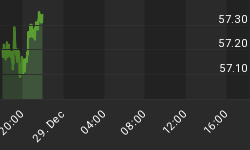Watch for a lower high this spring.
We have posted numerous articles explaining why and how we believe the U.S. Dollar will go higher in coming months. In conjunction with that idea, one of the best counterpart bearish currency trades may becoming up soon with the Australian Dollar (NYSEARCA:FXA). This article shows our current Elliott wave interpretations for both currencies, and that should suggest ways to trade them against each other.
Since the U.S. Dollar (DX) serves more than any other as the world's reserve currency, we monitor other currencies in relation to the U.S. Dollar. In part we do this to make our analytical job manageable, but there are other advantages as well. For example, when expressed against the U.S. Dollar, changes in trend tend to occur at the same time among the other currencies. Another advantage, perhaps more important, is that understanding the path of the U.S. Dollar gives the trader a real edge in forecasting the path of other currencies.
Our primary Elliott interpretation describes price action since the 2008 low in DX as a complex corrective pattern, taking the form [a]-[b]-[c]-X-[a]-[b]-[c]. The rally we are expecting would be the final wave [c] of that pattern. If price rises from its 2013 low that was near the 1x1 Fibonacci projection level at 79.27, then upward projection targets for [c] include 90.64 and 97.58.

Meanwhile, the Australian Dollar (AD) has found resistance at the top of the monthly channel defined by the Andrews fork shown below. That area also represented a 1x1 price measurement from the 2001 low, and it produced two exhaustion signals from the Wave59 "nine-five" indicator (not shown). We are provisionally treating the high of April 2013 as a lasting high and are watching for continued movement downward. One sign that would increase confidence in the bearish view would be price remaining below the October 2013 high of 0.9344. Another would be a monthly close below the middle line of the fork shown below.

The weekly chart for AD shows how the wave structure might be setting up to produce a strong downward middle-third wave soon. The important thing to watch this spring is for AD to remain below the high of last autumn and to begin accelerating downward. A more detailed daily chart can be found at Trading On The Mark.

















